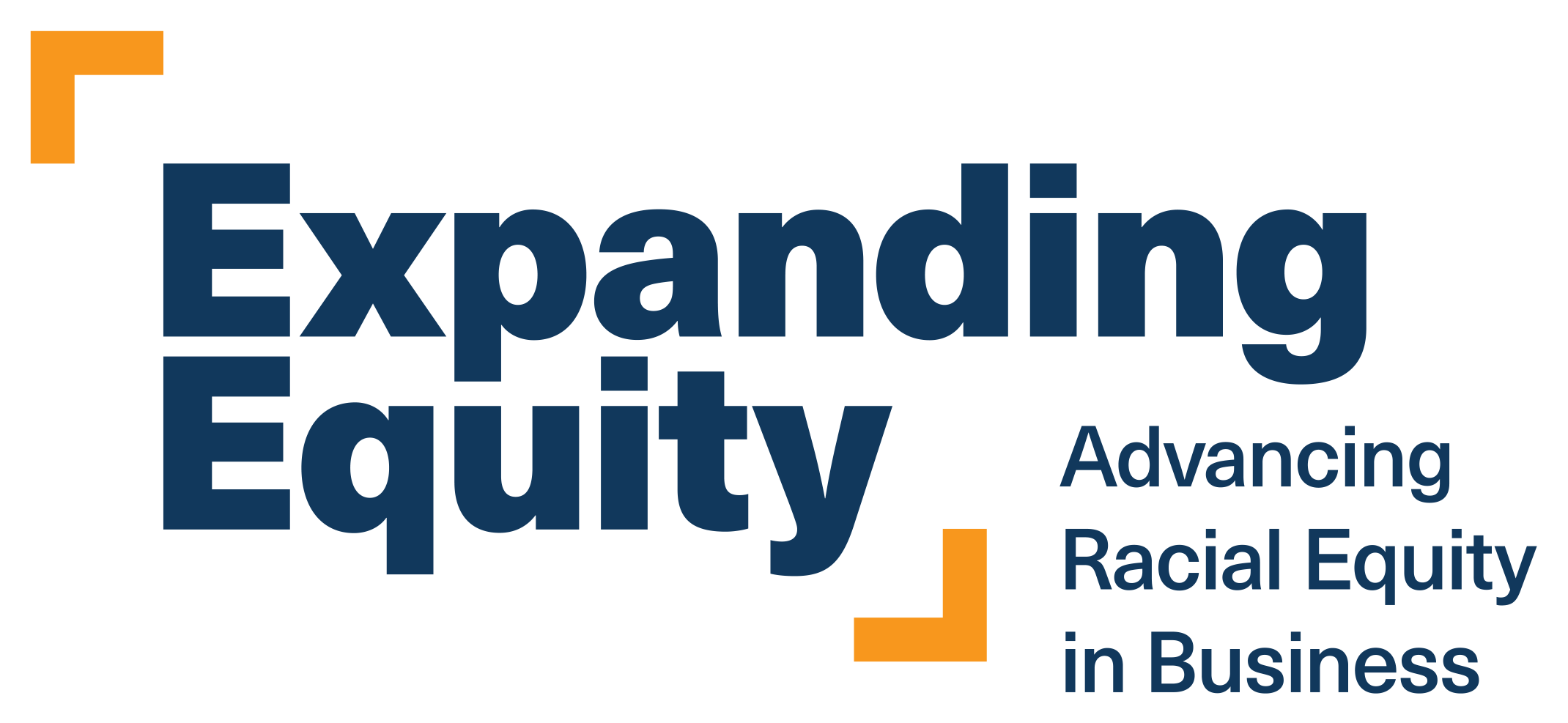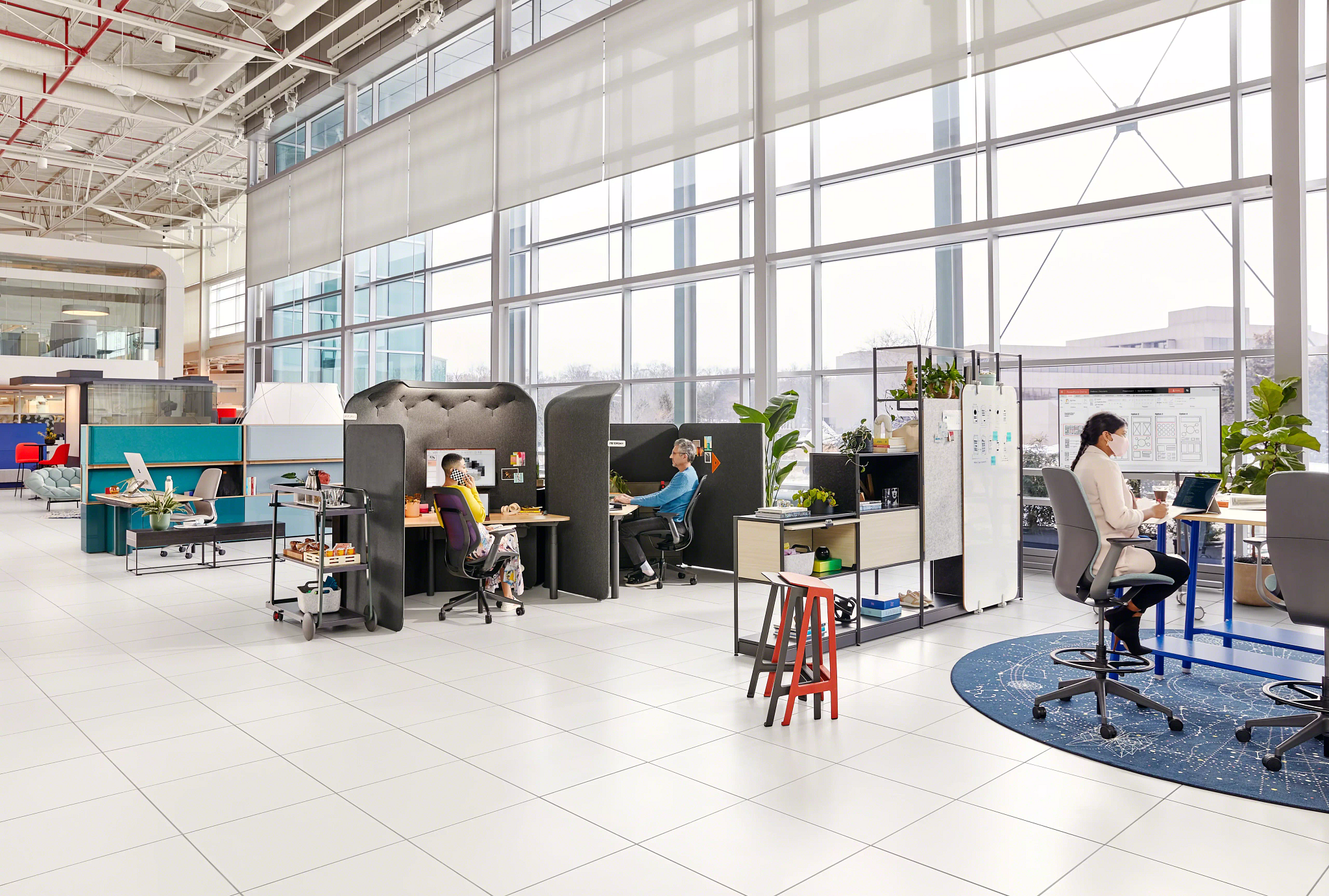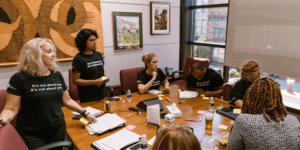Using a skills-based hiring approach as part of a DEI strategy
Steelcase Case Study
November 2022

This case study is part of the W.K. Kellogg Foundation’s Expanding Equity program, which helps workplaces become more racially equitable places of opportunity. The program supports and inspires companies to take action using four pillars: Attract, Belong, Promote and Influence. Each pillar offers unique opportunities for advancing racial equity, diversity and inclusion in companies. This case study lifts up actions from the Attract pillar, which focuses on attracting and hiring professionals of color into a company, in turn increasing representation at all levels of the organization.


Executive Summary
In striving to build an equitable place of opportunity, Steelcase aims to attract and retain the best talent from diverse backgrounds at all levels of the organization. Steelcase, a global leader in the office furniture industry, set out to implement a diversity, equity and inclusion (DEI) strategy, recognizing that building a diverse workforce means going beyond traditional hiring practices.

In developing this strategy, Steelcase set up goals that prioritize skills-based hiring and expand the pool of talent from which it can hire.
To implement this, Steelcase took the following actions:
- Created a deep data analysis system for hiring practices and listened to employees to understand the current state and to identify opportunities
- Researched best practices for skills-based hiring
- Created positions within HR specifically for people who specialize in developing new pipelines and sources for diverse talent
- Removed barriers to entry, such as industry experience, whenever possible
- Revamped job postings to eliminate biased language
- Shifted away from a “résumé and pedigree” focus to a skills and competency, evidence-based approach
- Developed a playbook on diverse hiring practices for hiring managers and recruiters
To sustain these efforts, the Steelcase global talent team redesigned its talent acquisition strategy and team structure, identified areas of focus for their recruiting practices, partnered across business units, and engaged current employees to involve them in the hiring process. These efforts resulted in a robust, standardized hiring process that uplifts evidence-based hiring while working to eliminate biases.
Along its journey, Steelcase highlighted three core takeaways it would recommend to other companies seeking to implement a similar initiative:
- Start small and learn quickly
- Favor progress over perfection
- Design a system approach to goal setting, measurement and progress tracking
The Challenge
Steelcase was prepared to challenge traditional hiring practices and transform its hiring process. However, this effort required more than just seeking diverse candidates. A skills-based approach would expand the pool of talent from which the company could hire.
“At the end of the day, we want to hire the best talent,” explained Isabel Medellin, global director DEI & talent acquisition at Steelcase. “Inspired by HireReach’s work as well as the readings ‘Hire more for skills, less for industry experience’ by McKinsey & Company and ‘7 Practical Ways to Reduce Bias in Your Hiring Process’ from the Harvard Business Review, we believe if we can feed more diverse talent into the top of the funnel using a fair and equitable selection process, we will build diversity organically.”

Background
Steelcase was founded in 1912 in Grand Rapids, Michigan as a furniture company with one simple innovation – a fireproof metal wastebasket for corporate offices. Since then, the company has continued to turn insights into innovations and make the world a better place by setting bold goals, keeping commitments and conducting its business with integrity. Today, Steelcase has become a global leader in the office furniture industry with more than 10,000 employees.
As part of its goal to help build a more sustainable, inclusive and equitable world, Steelcase is committed to building teams that reflect the diversity of their communities, in the U.S. and globally. One element of this is a more equitable hiring process. “Building Diverse Teams” is one of its five key DEI aspirational goals.
In 2017, the Global Talent team reassessed its talent acquisition practices. This involved thinking critically and creatively about how Steelcase could attract a more diverse pool of talent from which to hire, leverage data analytics to help eliminate bias, improve the candidate experience, and gain process efficiencies.
“Our DEI strategy is a key organizational capability as we aspire to create a culture of belonging that reflects the communities in which we live and work…We are always looking to be better at what we do.”
- Isabel Medellin, Global Director DEI & Talent Acquisition at Steelcase
The next year, Steelcase redesigned its talent acquisition team by developing and implementing a strategy to change systemic biases and advance its aspirational goals. Through this exploration, Steelcase discovered good practices that were already in use across the company. It also found inconsistencies in the hiring process, including what criteria were used for the selection of candidates, the tools used for hiring and the role each person played in the process. Because of their learnings from HireReach and other Grand Rapids community-based racial equity efforts, Steelcase knew they had an opportunity to improve equity by evaluating all candidates in a consistent format with criteria and practices that mitigated bias.
How Steelcase Implemented Skills-Based Hiring
To set its DEI aspirational goals and tie them to the implementation of skills-based hiring, Steelcase took the following approach.1
Steelcase wanted to make its talent acquisition more equitable and believed that improving the representation in its candidate slates and standardizing the hiring process would help.
A statistical analysis by Stefanie K. Johnson – published in the Harvard Business Review – outlined the impact of having diverse candidate slates and helped confirm Steelcase’s initial hypothesis, tracking its diversity slate numbers and impact on the company’s overall representation.
As part of the company’s two-year journey of discovery with HireReach, the team had access to external benchmarking and subject matter experts who could help the organization think through and devise a standardized hiring process. This, combined with implementing a new applicant tracking system, led Steelcase to capture more robust data to get more insights about the current state and focus areas.
“For us, this is beyond racial equity,” explained Medellin. “Our DEI aspiration is to create a culture of belonging that represents the communities in which we live and work. Inclusion and a sense of belonging are rooted in the company’s DNA and increase performance, innovation and growth.” Attracting diverse talent to Steelcase is paramount to achieving this outcome.
To achieve this aspiration, Steelcase designed a system-based approach to DEI to remove roadblocks and drive progress. “We used the data to identify systemic barriers, drafted aspirational goals and aligned the senior executives to them and created accountabilities to the goals with progress metrics and a regular cadence to the board of directors,” said Medellin.
Steelcase took an outcome-oriented approach to assess the company’s efforts toward continuing to drive the right behavior in leaders, teams and employees to influence a transformative process.
Based on external research, Steelcase determined it could increase diversity among new hires by increasing representation in candidate slates. To accomplish this, the company focused on three priority initiatives at the beginning of the hiring process:
- Make recruiting efforts focus more on skills-based selection by implementing a process that relies on competencies gained from experience.
- Partner with programs such as HireReach, Thurgood Marshall College Fund and Building Bridges Through Education, that specialize in diverse talent, which Steelcase viewed as essential in creating a strategic pipeline for shaping the future of its workforce.
- Expand the intern program’s outreach efforts as they are a strategic source of highly skilled and diverse talent.
Steelcase was largely inspired to build their evidence-based selection process on its review of an article in the Harvard Business Review “Noise: How to Overcome the High, Hidden Cost of Inconsistent Decision Making,” as well as utilizing the study adapted from the Schmidt and Hunter article “The Validity and Utility of Selection Methods in Personnel Psychology.”
“The whole idea is that we are looking in more places; we are tapping into talent pools we have not connected into before, and we are doing our best to eliminate barriers in the selection process,” explained Medellin.
To implement an evidence-based selection process for hiring, Steelcase:
1. Created positions within HR specifically for people who specialize in inclusive recruiting
These program management roles are centered on identifying, engaging and cultivating partnerships with organizations, associations and academic institutions that could serve as talent pipelines for candidates from diverse backgrounds.
2. Developed a playbook on inclusive hiring practices to train all its recruiters
Steelcase knew there were unique aspects of its transformed hiring process that needed to be in a designated resource for recruiters to utilize. So, Steelcase created a playbook that includes a list of organizations, job boards and different talent pools through which recruiters could find more diverse talent to expand their candidate pool. This guided the recruitment team to look beyond common or traditional places for potential hires who often do not represent diverse backgrounds.
3. Revamped job postings to eliminate biased language and to go from a “résumé and pedigree” approach to a skills-based and competency approach
Steelcase began utilizing a skills-based job posting generator and other educational tools shared by the Multiple Pathways initiative, which was started by the Business Roundtable. This included a tool called Textio, an augmented writing platform designed to identify and eliminate gender-based language, which Steelcase began applying to its job postings.
In addition to these tools helping to remove biased language from job postings, Steelcase applied a skills-based and competency approach in posts – leading recruiters to focus on the skills, competencies and value candidates can bring rather than where the candidate went to school or their GPA.
4. Switched to a cognitive-based assessment selection system
Steelcase began using Raven’s Advanced Progressive Matrices, a gold-standard assessment that helps organizations identify an individual’s general cognitive ability. It is a nonverbal measure of fluid reasoning and was standardized as one data point in Steelcase’s cognitive-based selection system.
The company documented its updated hiring process and made into formal policy. It includes support documentation to help equip hiring leaders, and the rest of the business, to understand and implement the new hiring practices.
The Global Talent team at Steelcase continues to assess effectiveness of the new approach, identify areas of improvement and iterate its approaches. They review all progress metrics against DEI aspirational goals on a quarterly basis, and routinely review the efficacy of its talent acquisition process and its impact on the company’s hiring progress goals.
1 Scott Keller and Colin Price, Beyond Performance: How Great Organizations Build Ultimate Competitive Advantage, 2011
How the Expanding Equity Program Supported Steelcase
The Expanding Equity program offers every company an analysis of its current talent pipeline and the diversity representation at each job level. The program affirmed Steelcase’s present work process while also identifying areas in which they can continue to build. It also highlighted potential gaps that may exist in the current strategy.
“As part of that Expanding Equity coaching and our FY22 progress metrics results, we have identified areas of focus to apply more critical and creative thinking related to the Attract pillar,” said Medellin. “We are looking at the big picture, breaking it down and determining areas that can help us accelerate progress.”
Steelcase reflected on how the Expanding Equity program inspired them to take strategic actions by using the program’s four pillars: Attract, Belong, Promote and Influence as a guide. The pillars align with the company’s efforts to ensure equitable access to opportunity. Steelcase plans to apply program learnings to creating talent visibility programs and expanding the hiring pool to bring in a wider array of talent.
Results/Progress-to-date
Steelcase produced a more equitable recruitment and hiring program to support its goal to diversify the workplace. Its updated hiring practices have brought in talented workers from all backgrounds because of the focus on candidates’ competencies, skills and experiences over traditional benchmarks such as educational performance. It also began to focus on identifying diverse talent as early as possible, leading to a more diverse class of interns during the summer of 2022.
Together, these efforts resulted in a recent cohort of new hires that include 55% women (up 2% from last year) and 30% racial or ethnic minorities (U.S. data only). You can learn more in the company 2022 Steelcase Impact Report.

“I’m proud to say we have a systems approach to drive DEI progress and the results are evident while acknowledging we have opportunities for improvement – it’s a combination of looking at different accelerator factors and trying to eliminate barriers to drive progress."
- Isabel Medellin
Key Learnings
In looking back at its time reforming its strategies and initiatives to diversify the workplace, Steelcase shared the following learnings from its experience:
1. Start small and learn quickly
While having a global DEI strategy is essential to have consistency within a decentralized approach to execution, organizations should empower different regions and teams to drive their collective progress in a manner that makes sense to their area and share best practices.
“We had our DEI Core Team partner with global and local teams through strategy sessions,” said Medellin. “During this, we discussed critical factors to advance DEI in their local teams using the critical thinking model to identify one thing to prototype and, if successful, scale within the function or exchange it as best practice to scale at the regional or global level.”
2. Favor progress over perfection
Steelcase emphasized that DEI work is not a fast and quick process, but a transformation that takes time.
“You want to ensure there is a clear true north and a common understanding of why you are doing this, so the motivations of all people involved in the strategy development and execution are towards a transformative approach and not a performative one,” explained Medellin.
3. Design a system approach to goal setting, measurement, progress tracking and feedback
Steelcase designed a system approach to drive DEI progress, identified barriers, and recognized how to remove those barriers. “By identifying a system approach to strategy design, you can identify quick wins while paving the road to amplify impact in the long-term,” shared Medellin. “Ultimately, transformation happens at the intersection of systemic and personal levels as we create day-to-day experiences for our employees.”
Explore More Expanding Equity Content

Linking ideas, tools and knowledge to action

DEI expert: Be proactive, not reactive

Implementing HR policies and practices that center and advance racial equity, diversity and inclusion: New toolkit shares WKKF’s “how”
Diversifying suppliers, vendors and business partners as part of DEI strategy

Actions for racial equity in the investment management industry

DEI and the frontline worker experience

Ripples of Change: Ralph de Chabert’s racial equity, diversity and inclusion journey

Advancing DE&I representation goals through formal incentives

Inclusion & Belonging: Actions toward racial equity



Comments